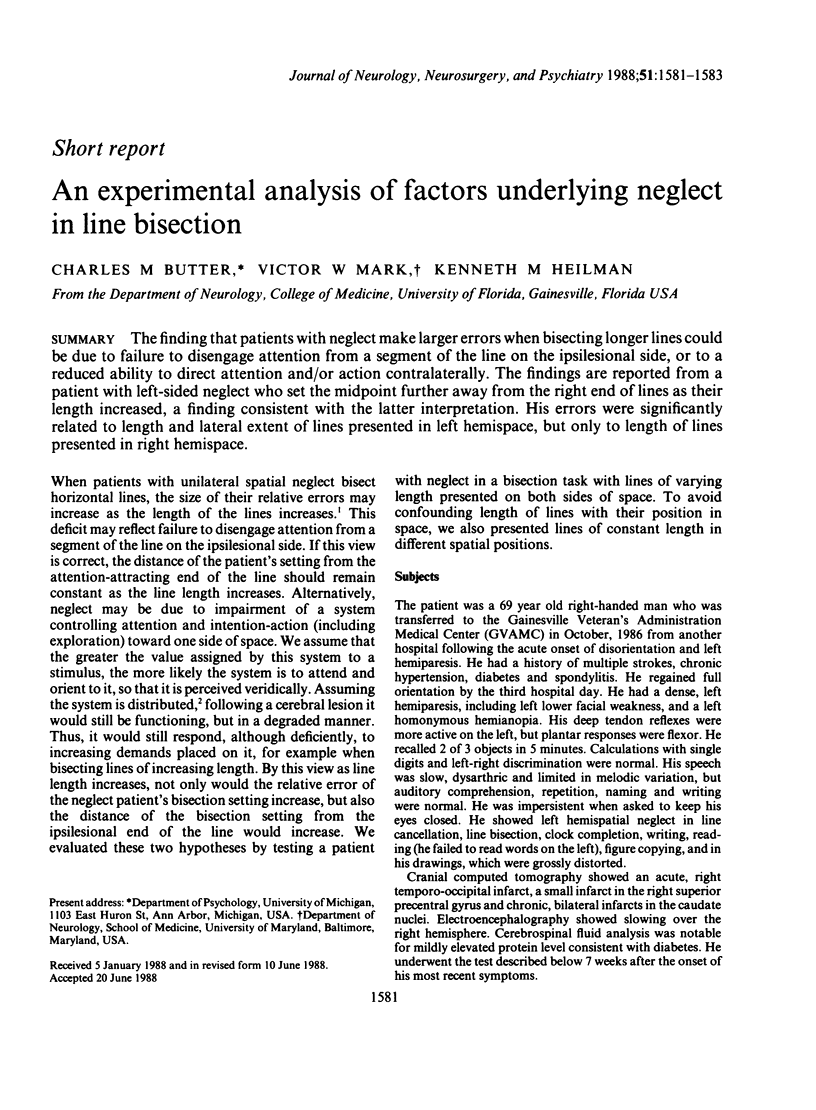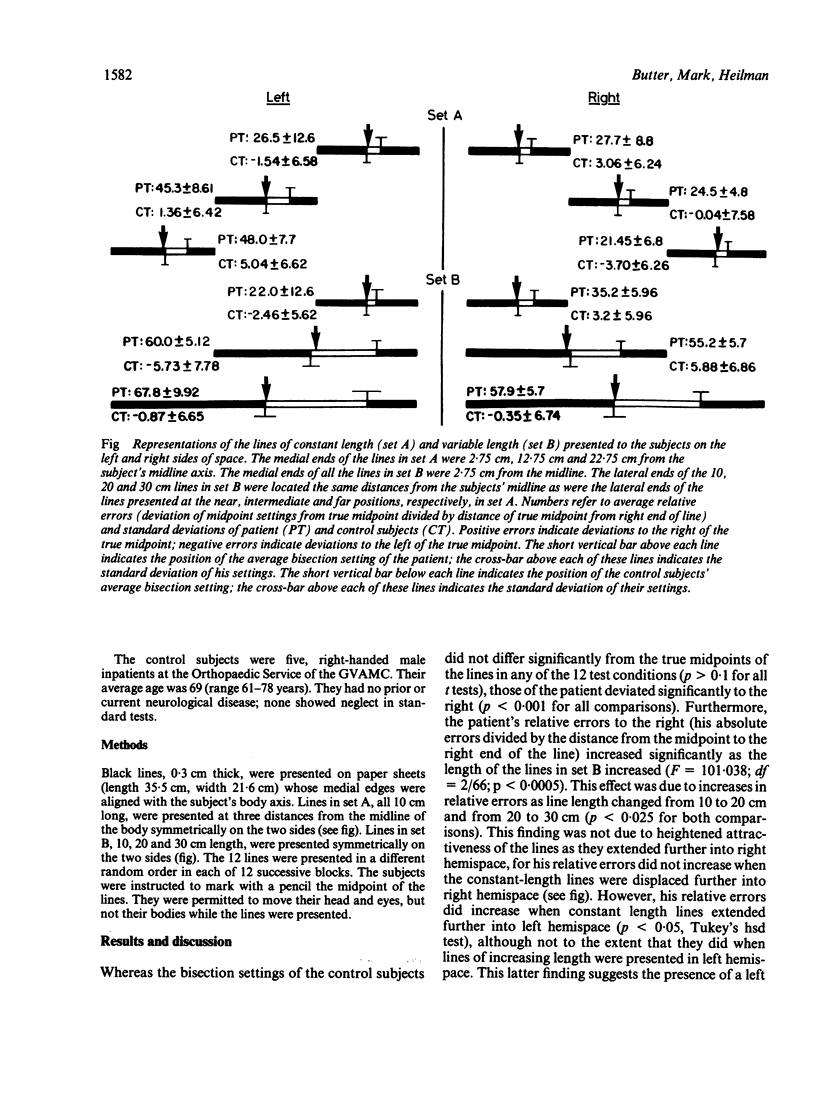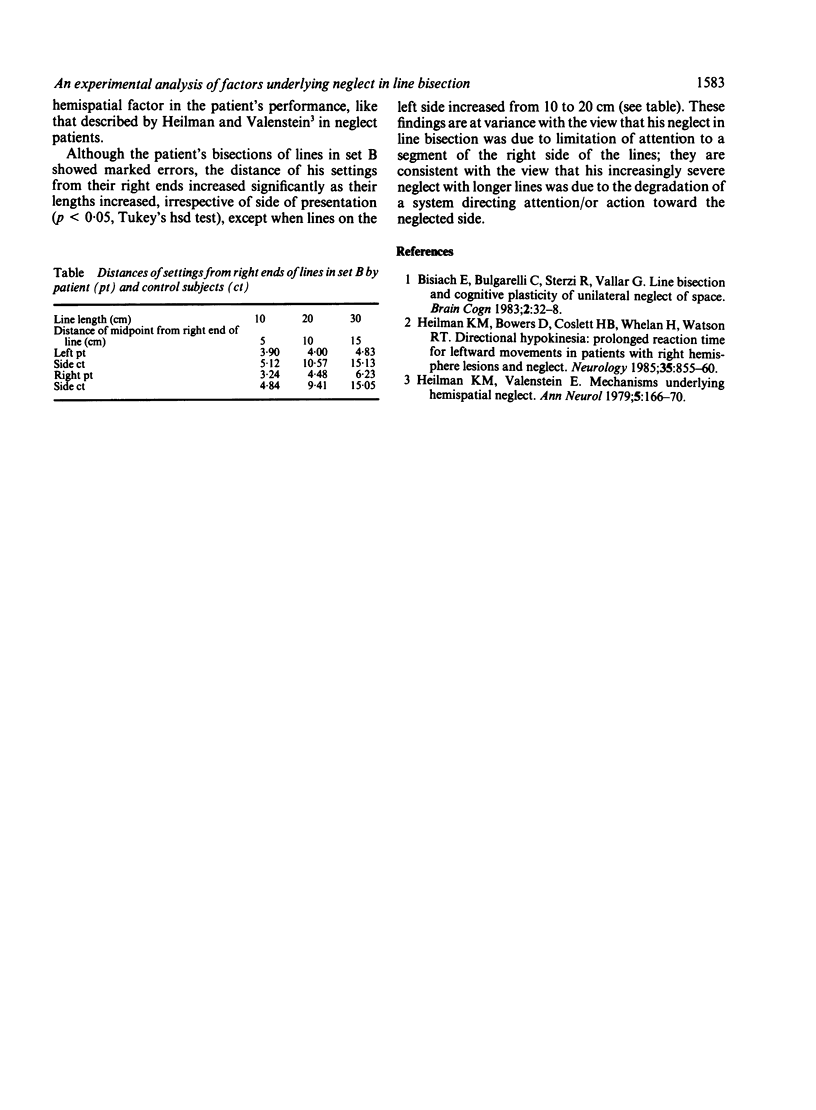Abstract
The finding that patients with neglect make larger errors when bisecting longer lines could be due to failure to disengage attention from a segment of the line on the ipsilesional side, or to a reduced ability to direct attention and/or action contralaterally. The findings are reported from a patient with left-sided neglect who set the midpoint further away from the right end of lines as their length increased, a finding consistent with the latter interpretation. His errors were significantly related to length and lateral extent of lines presented in left hemispace, but only to length of lines presented in right hemispace.
Full text
PDF


Selected References
These references are in PubMed. This may not be the complete list of references from this article.
- Bisiach E., Bulgarelli C., Sterzi R., Vallar G. Line bisection and cognitive plasticity of unilateral neglect of space. Brain Cogn. 1983 Jan;2(1):32–38. doi: 10.1016/0278-2626(83)90027-1. [DOI] [PubMed] [Google Scholar]
- Heilman K. M., Bowers D., Coslett H. B., Whelan H., Watson R. T. Directional hypokinesia: prolonged reaction times for leftward movements in patients with right hemisphere lesions and neglect. Neurology. 1985 Jun;35(6):855–859. doi: 10.1212/wnl.35.6.855. [DOI] [PubMed] [Google Scholar]
- Heilman K. M., Valenstein E. Mechanisms underlying hemispatial neglect. Ann Neurol. 1979 Feb;5(2):166–170. doi: 10.1002/ana.410050210. [DOI] [PubMed] [Google Scholar]


